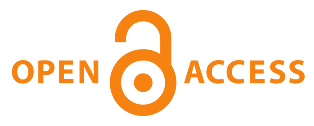Author Guidelines
Rules of Writing Articles in International Journal of Business, Law, and Education
Title of Article
The title must be formulated clearly and concisely in English, using Arial font, size 16 pts, bold, single spacing, and aligned to the left margin. It should be in uppercase and contain fewer than 15 words. List the names of all authors without titles, using Arial font, size 12 pts, bold, and aligned to the left margin. The second line should include the names of the authors' affiliated institutions, using Arial font, size 11 pts, aligned to the left margin. On the third line, include the corresponding author's email address. If there are multiple authors, their names and affiliations should be formatted similarly to the first author.
Abstract
The abstract should not exceed 150 words and must be written in both English, using Arial font, size 10 pts, with single spacing. Leave one blank line between the title-author heading and the abstract text. Begin the abstract at the left margin, and type it as a single paragraph. The abstract should include the research objectives, method, sample population, and results. After the abstract, leave one blank line and provide up to five keywords in lowercase, starting the line with the word "Keywords."
1. Introduction
The article should follow a two-column format. The introduction should be titled "Introduction" and placed immediately after the keywords. Use Arial font, size 12 pts, single spacing, on A4 paper with the following margins: left 1.75 cm, right 1.5 cm, top 2.3 cm, and bottom 2.3 cm. This section should present the background of the issue, supported by relevant and up-to-date concepts, theories, and previous research findings. Clearly state the article's research objectives or purpose at the end of this section.
2. Method
This section should describe the research objectives, approach, and methods used. It should detail whether the research utilizes qualitative or quantitative data, outline the data collection instruments, and explain the analysis procedures.
3. Results and Discussion
The results should provide clear and detailed answers to the research questions using quantitative and/or qualitative data. This section may include information in the form of images, graphs, tables, or descriptive text.
Discussion
The discussion should include arguments related to the research results, connect them with relevant theories or other research findings, interpret the findings, identify study limitations, and discuss their implications for the development of scientific concepts.
4. Conclusion
The conclusion should summarize the research findings, clearly stating the contribution to scientific knowledge or development.
5. References
The references should include only the sources cited in the article. To maintain uniformity and international standards, references must follow APA citation style.
Footnotes
Avoid the use of footnotes whenever possible.
Figures, Diagrams & Tables
Diagrams, figures, tables, and pictures should be centered and placed in their appropriate locations within the text. They should be formatted in a single-column layout and include a title, following this format: "Figure 1: Title" (Arial, 11 pt). Use grayscale images. Ensure that labels within diagrams, figures, tables, and pictures have a horizontal orientation.
Articles are written in accordance with the Manuscript Templates provided.






